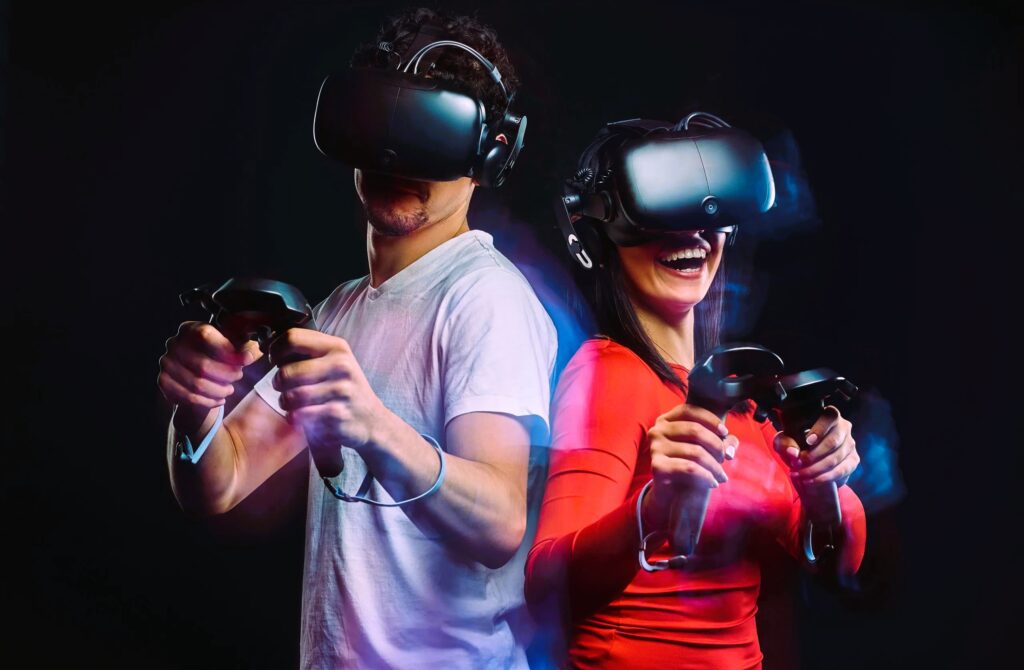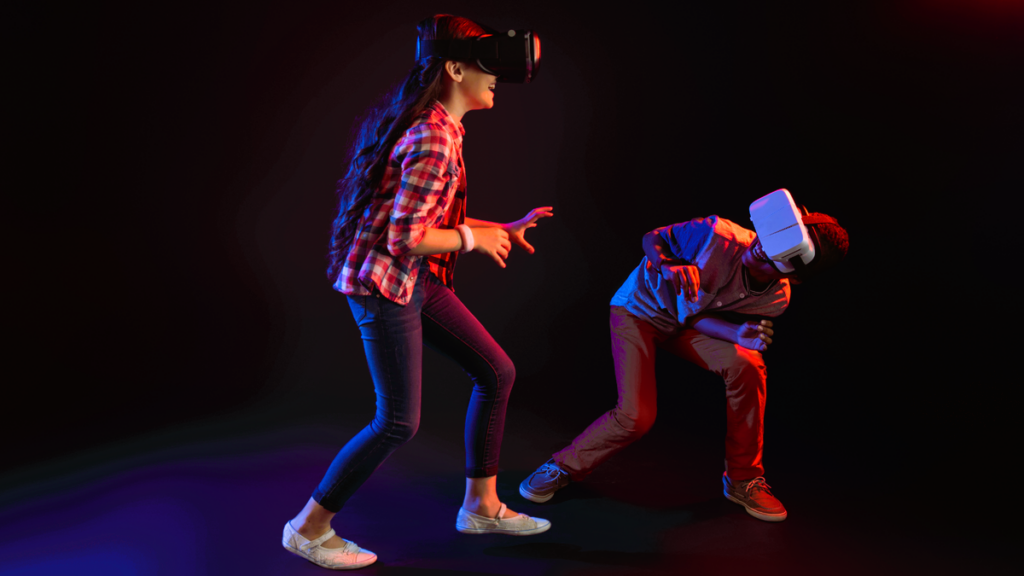Virtual Reality (VR) gaming has transformed the way we experience games, offering immersive environments and interactive gameplay that draw players into fantastical worlds. Beyond the captivating solo experiences, VR gaming has also carved a significant niche in the realm of multiplayer gaming. This article delves into the social aspect of VR gaming, exploring how it fosters community, collaboration, and competition among players worldwide.
The Evolution of Multiplayer VR Gaming
Multiplayer gaming has been a cornerstone of the video game industry for decades, with games like “Quake,” “Halo,” and “World of Warcraft” setting the stage for online communities and cooperative gameplay. VR has taken these concepts to new heights by providing players with a sense of presence and immersion that traditional gaming cannot match.
Early VR multiplayer experiences were relatively simple, focusing on co-located multiplayer modes where players shared the same physical space. As VR technology advanced, the advent of online multiplayer VR games allowed players from different locations to connect and interact in virtual environments. This evolution has led to a diverse array of multiplayer VR experiences, from cooperative puzzle-solving and team-based shooters to social hangouts and virtual reality sports.
The Power of Presence

One of the most compelling aspects of VR multiplayer gaming is the sense of presence it creates. Presence is the feeling of being physically “there” in the virtual environment, and it significantly enhances the social interactions between players. In VR, avatars are more than just on-screen representations; they mimic the movements and gestures of real players, making interactions feel natural and lifelike.
This heightened sense of presence enables players to engage in meaningful social interactions, whether they are strategizing in a team-based game, competing in a virtual sports match, or simply hanging out in a virtual social space. The ability to read body language, make eye contact, and use hand gestures in VR adds a layer of depth to these interactions, fostering a stronger sense of connection and camaraderie among players. Read about the role of artificial intelligence in the development of VR games in our article.
Popular Multiplayer VR Games
Several multiplayer VR games have captured the imaginations of players and demonstrated the potential of social VR gaming. Here are a few standout titles:
- Rec Room
- Description: Rec Room is a social VR platform that offers a wide range of activities, including mini-games, sports, and custom user-created rooms. Players can meet new friends, collaborate on creative projects, and participate in competitive games.
- Features: User-generated content, cross-platform play, customizable avatars.
- Impact: Rec Room has become a hub for social interaction in VR, with a vibrant community and regular updates that keep the experience fresh.
- VRChat
- Description: VRChat is a virtual social platform where players can create and explore a vast array of user-generated worlds. It is known for its diverse community and the freedom it offers for self-expression and creativity.
- Features: Custom avatars, user-created worlds, interactive objects.
- Impact: VRChat has gained a reputation for its lively and sometimes eccentric community, becoming a popular destination for socializing and creative exploration.
- Echo VR
- Description: Echo VR is a multiplayer sports game set in a zero-gravity arena. Players compete in teams to score goals by throwing a disc into the opposing team’s goal, using their VR controllers to navigate the arena and interact with the environment.
- Features: Team-based gameplay, competitive leagues, realistic physics.
- Impact: Echo VR has established itself as a competitive and thrilling VR sports experience, with a dedicated player base and official tournaments.
- Star Trek: Bridge Crew
- Description: Star Trek: Bridge Crew places players on the bridge of a starship from the iconic Star Trek universe. Each player takes on a specific role, such as captain, engineer, or tactical officer, and must work together to complete missions.
- Features: Cooperative gameplay, role-specific tasks, voice communication.
- Impact: Star Trek: Bridge Crew offers a unique cooperative experience that requires teamwork and communication, making it a hit among Star Trek fans and VR enthusiasts alike.
Building and Sustaining Communities
The social aspect of VR gaming goes beyond the games themselves; it extends to the communities that form around these experiences. Online forums, social media groups, and in-game chat features allow players to connect, share tips, and organize events. Developers also play a crucial role in fostering community by providing regular updates, hosting events, and engaging with players.
For example, Rec Room hosts regular “Rec Room Originals” events, where players can participate in special activities and win exclusive rewards. Similarly, Echo VR’s developers organize competitive leagues and tournaments, providing players with opportunities to showcase their skills and connect with others who share their passion for the game.
The Challenges of Multiplayer VR Gaming
Despite its many advantages, multiplayer VR gaming also faces several challenges. These include technical issues, such as latency and motion sickness, as well as social challenges, such as harassment and maintaining a positive community atmosphere.
Technical Challenges
- Latency: Ensuring smooth and responsive gameplay in online multiplayer VR games can be challenging due to the high data rates and low latency required for an immersive experience. Developers must optimize their games and servers to minimize lag and provide a seamless experience for players.
- Motion Sickness: Some players experience motion sickness when playing VR games, particularly those with fast-paced or intense movements. Developers must carefully design their games to minimize this risk, using techniques such as teleportation-based movement and comfort settings.
Social Challenges

- Harassment: Like any online gaming community, VR multiplayer games can sometimes be affected by harassment and toxic behavior. Developers and community managers must implement moderation tools and policies to address these issues and create a welcoming environment for all players.
- Community Management: Building and maintaining a positive community requires ongoing effort and engagement from developers. This includes regular updates, clear communication, and responsiveness to player feedback.
The Future of Multiplayer VR Gaming
The future of multiplayer VR gaming looks bright, with ongoing advancements in technology and an ever-growing player base. Here are some trends to watch out for:
- Cross-Platform Play: As VR gaming continues to grow, cross-platform play will become increasingly important, allowing players on different VR systems to connect and play together seamlessly.
- Enhanced Social Features: Developers will continue to innovate in the realm of social features, adding new ways for players to interact, collaborate, and compete. This could include advanced avatar customization, more immersive social spaces, and improved communication tools.
- Esports and Competitive Gaming: The rise of VR esports and competitive gaming will bring new opportunities for players to showcase their skills and compete at the highest level. Official leagues, tournaments, and sponsorships will further legitimize VR gaming as a competitive sport.
Conclusion
Multiplayer VR gaming offers a unique and immersive social experience that brings players together in ways that traditional gaming cannot. From the sense of presence and realistic interactions to the vibrant communities and competitive gameplay, VR multiplayer games have captured the imaginations of players around the world. As technology continues to advance, we can look forward to even more exciting and innovative social VR experiences in the years to come.
For more information on VR gaming, visit Wikipedia.


